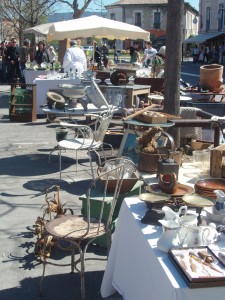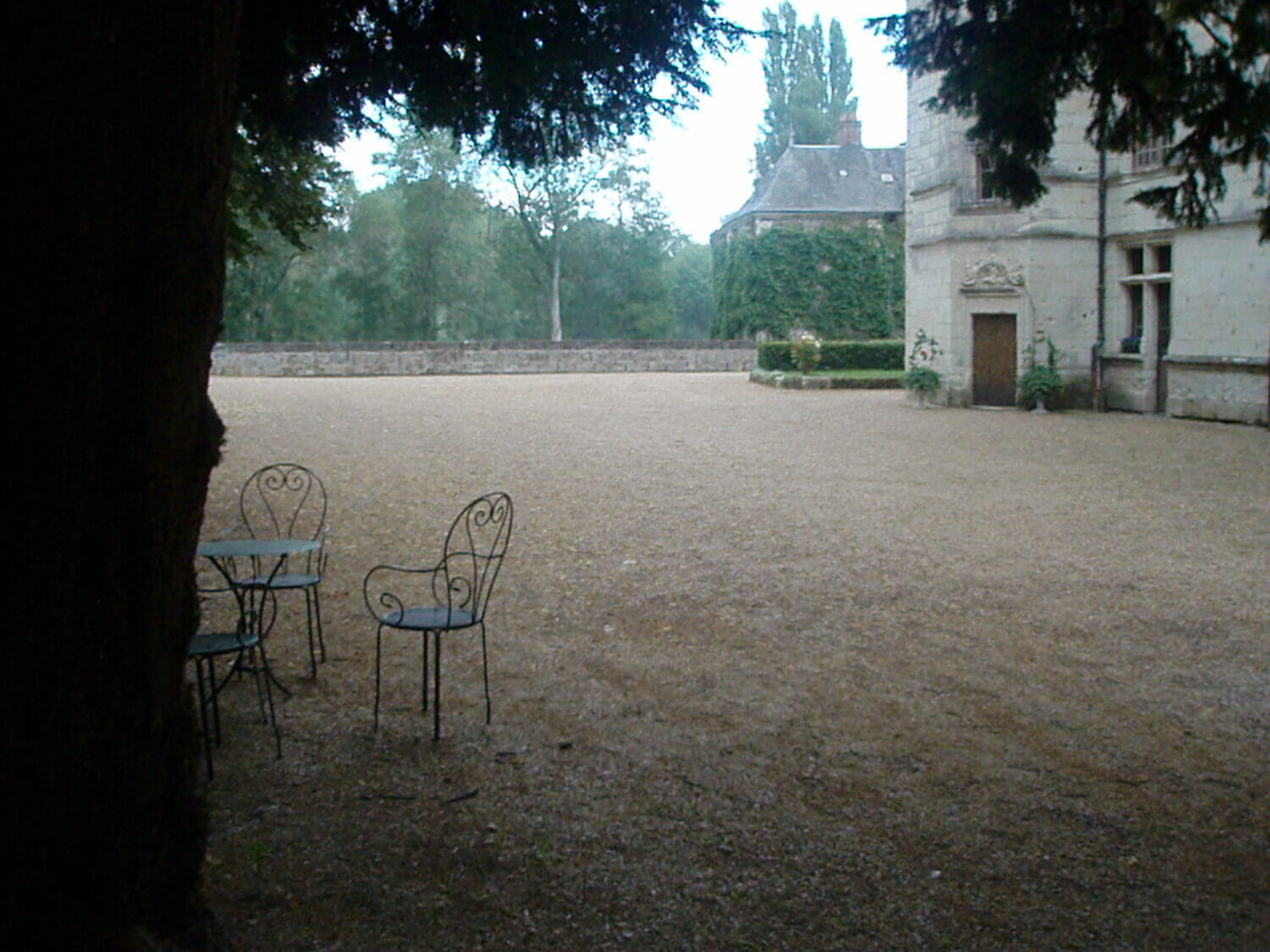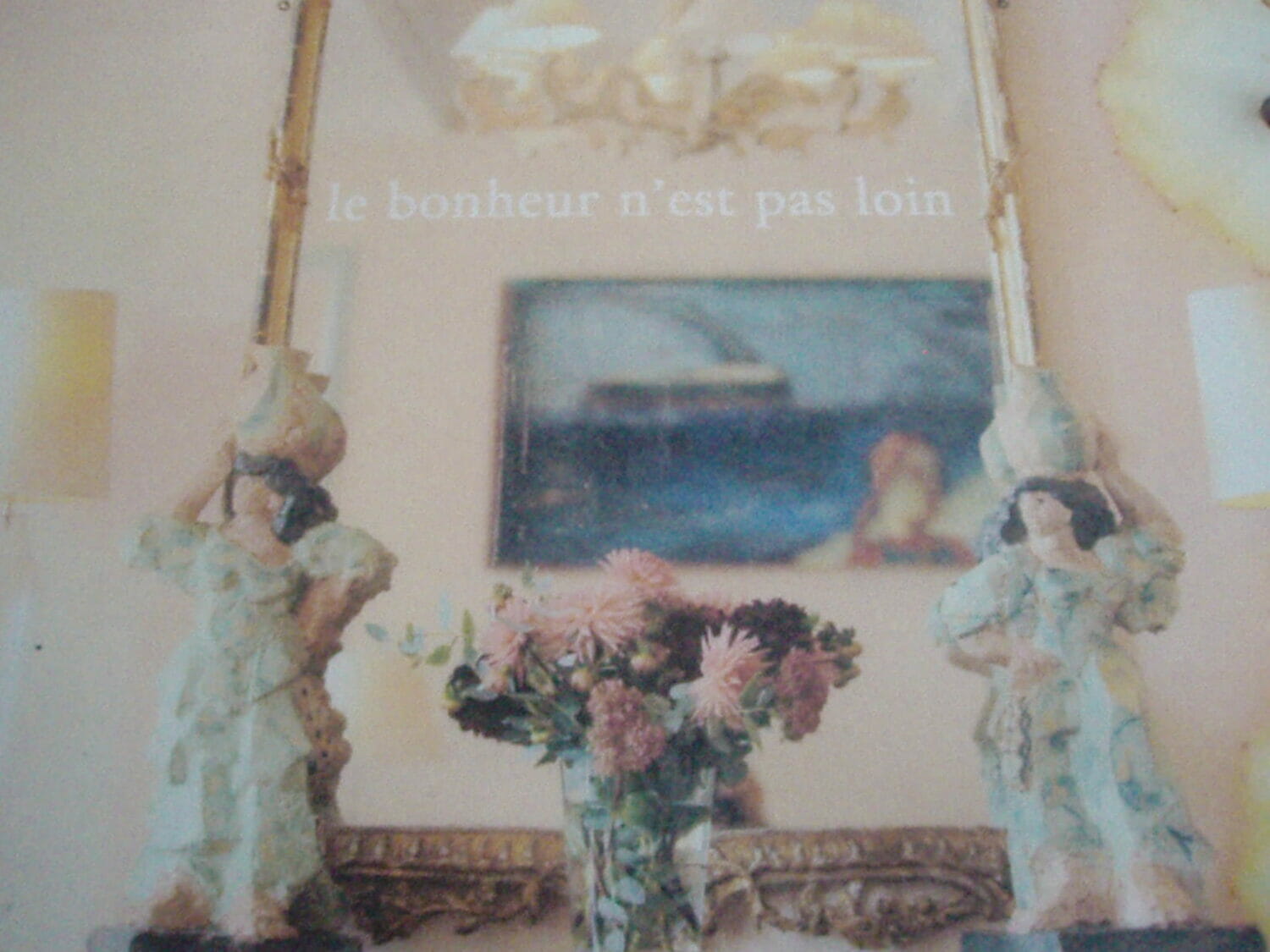Later that afternoon I drove from Beziers to see the Mediterranean. A group of men by the port at Agde were intensely focused on their game of pétanque, and someone else was scraping down his wooden boat, listening to a breezy tune on his radio. A few couples sat out on café terraces, but it was quiet here, the season barely begun. A gentle place to spend an hour or so. After an early fish supper I made the journey back to the other side of Avignon. It had been a good day, and there was the Avignon market to come in two days.
A nearby village was holding a vide-grenier early next day too. Yvette was up, still tousled and in her dressing gown, when I put my head round the kitchen door and said I’d be back in time for breakfast. Without a word she picked up a baking tray not long out of the oven, came over and gestured that I take a warm croissant. Marvellous.
The market at Caumont was small and selling mostly baby clothes and videos, but one couple were unloading rustic stools, wooden crates, cupboards and galvanised tubs – all in need of a good clean or a paintbrush, but not without their charm. Monsieur carried a few items back to the car for me and explained that he often cut lawns and trimmed hedges for local retired farm hands. They had little spare cash to pay him but they exchanged redundant tools and small items of furniture for his labours. He then came to market and everyone was content.
Le Mas de la Cigale Bleue is quite near Isle sur la Sorgue, the Venice of Provence. Surrounded by waterways of clear, fast flowing water from the source of the Vaucluse, it is also known for its many exquisite antique shops. In addition, a regular Sunday food and antiques market wound its way along both sides of the water. Yvette said that she had never found anything of reasonable price to buy there, but I wanted to see the place at least.
Coaching inns now with landscaped courtyards, the railway yard and other cavernous depots had been transformed into antiques shops packed with top end stock. 16th century paintings, 17th century chestnut commodes, stone sculpture, palacial chandeliers, the gleaming wood and the dry-scraped tastefully rubbed shoulders. The clientele was, of  course, moneyed. A tall American with a small trilby hat, a long grey duster coat, trousers above the ankle and bare feet inside his brogues was being urged to admire such and such a piece by his French shopping guide – “Ahw yes, my shop back home is full of those….” He sounded bored.
course, moneyed. A tall American with a small trilby hat, a long grey duster coat, trousers above the ankle and bare feet inside his brogues was being urged to admire such and such a piece by his French shopping guide – “Ahw yes, my shop back home is full of those….” He sounded bored.
Amongst Venetian mirrors and priceless Medieval carvings I found a small lithograph in an ivory colour frame which bore the title “La Ligue de Rats”. The theme struck me as unusual, the price was not astronomical, and the charming proprietor folded the picture in bubble wrap, popped it into a chic little bag and my first purchase at Isle sur la Sorgue was made. I later discovered that La Ligue des Rats was a fable written by La Fontaine in 1692. (Mr Rochester’s ward, Adele, reads this story in “Jane Eyre“).
On the corner near the car park, a little outside the town, stood another shop. It announced itself with less fanfare. Things were a dusty and arranged less aesthetically. The current proprietor was of the old school. He had carried on the business from his father and was happy to talk about how business had changed. He had clients, he said, who came regularly to buy from him but who never went into the town itself. “N’hesitez pas. Ouvrez tous les placards,” he encouraged. Indeed, cupboards and armoires were full of aperitif glasses, ceramic cheese strainers, hand painted porcelaine coffee services. Three full cardboard boxes were the result of some successful rummaging. He carried them out to the car for me and wished me “bonne chance” for the rest of my trip.





